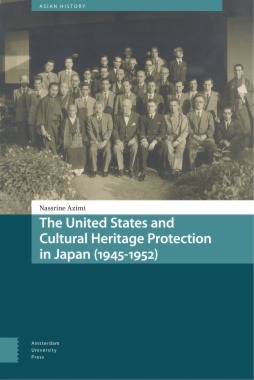One of the untold stories of the American military occupation of Japan, from 1945 to 1952, is that of efforts by the Arts and Monuments Division of the Supreme Commander for the Allied Powers (SCAP), for the preservation of Japan’s cultural heritage. While the role of Allies after WWII in salvaging the cultural heritage of Europe has recently become better known, not much is written of the extraordinary vision, planning and endeavors by curators and art specialists embedded in the US military and later based in Tokyo, and their peers and political masters back in Washington D.C. - all of whom ensured that defeated Japan’s cultural heritage was protected in the chaos and misery of post-war years.
- Cover
- Table of Contents
- Acknowledgements
- Foreword
- Preface
- Introduction
- I. Japan’s culture and cultural institutions before the war
- Bridges with the United States
- More than 36 views of Mount Fuji
- Encounters with the West
- Cultural fruits and frictions of the Meiji Restoration: The Iwakura Embassy
- Indispensable friendships at the Boston Museum of Fine Arts
- Ernest Fenollosa – the Boston-Japan bridge
- Okakura Tenshin – Teacher and Mentor
- Culture, the foundational stone?
- II. Prerequisites for occupation
- Planning the U.S. post-war policies for Japan
- Building towards the Arts and Monuments Division
- Franklin D. Roosevelt’s America and the New Dealers
- The American Defense-Harvard Group
- The American Council of Learned Societies (ACLS)
- The American Commission for the Protection and Salvage of Artistic and Historic Monuments in War Areas (The Roberts Commission)
- The Civil Affairs Training Schools (CATS)
- III. ‘Understanding Japan’
- The specialists
- Scholarship influencing policy and the bureaucracy?
- Joseph C. Grew – contested Dean of the ‘Japan Crowd’
- George B. Sansom – supreme diplomat and supreme scholar
- Ruth Benedict – the enemy, too, is human
- Scholars and the Pacific War
- IV. The shape of an occupation
- A league unto its own
- SCAP, its leadership and structure
- Culture under the Occupation
- V. The arts and monuments division
- Culture within the Civil Information and Education (CIE) Section
- George L. Stout – Father of MFAA, Founder of A&M
- Langdon Warner – An idol returns
- Sherman E. Lee – How it all worked
- Expecting the worst, getting the best?
- VI. Conclusions
- Rethinking the 1950 Law for the Protection of Cultural Property
- Quo Vadis?
- Imaginable consequences
- Illustrations
- References
- Index

